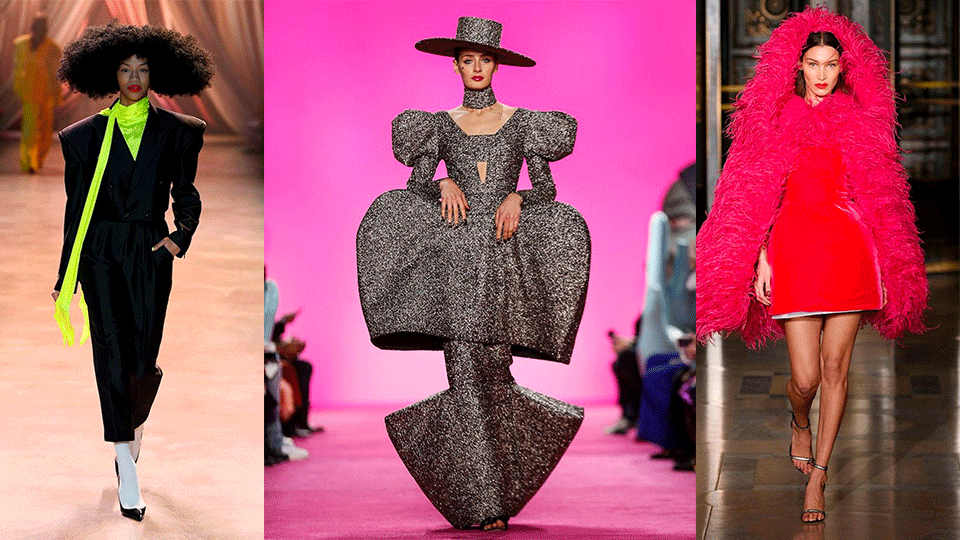- À New Wave to Fashion, À New Way of Living. Download Now on iOS Android Canada SS22
- hello@alahausse.ca
How Digital Eco-Labels On Our Clothes Could Transform The Way We Shop

Historical Fashion: Designing Costumes for History
January 10, 2023
Shifts in the Fashion Industry and Joining the Wave of Sustainable Style
January 10, 2023
Written by: Martina S
Digital Eco-labels create transparency, traceability and an equal playing field for all brands. There are comprehensive labels on our food for consumers to make an informed choice, why isn’t this implemented into the fashion industry?
With the increased awareness consumers and producers have on the environmental impact the fashion industry has, it is becoming increasingly important for brands to have transparency on their efforts. Digital Eco-labels would transform the way consumers shop and how clothing is produced. As it will lead to companies becoming accountable and owning up to their pledges towards integrating sustainable practices. Consumers need a system that helps inform them if brands are truly creating products that are sustainable like they say they are.


Why Digital Eco-labels?
Eco-labels help educate consumers about the environmental aspects and impacts of a product. This allows consumers to compare products and have the choice to select products that have a minimum impact on the environment. Overall, it gives consumers the power to help reduce the ecological footprint by recognizing products that are better for the environment. This labeling system can show a calculation of the carbon footprint for the product’s lifecycle. By having eco-labels implemented across the fashion industry, it gives consumers the voice to send a message to brands that they care about a product’s carbon footprint. This will further encourage brands to commit to sustainable production practices.
Defining Digital Ethics
To create a Digital Eco-label system that is standardized, there must also be a standardized definition for ethical production. As the viewpoint of ethical clothing production may be defined differently across the world, with room for interpretation. The Ecolabel Index, an independent global directory of ecolabels and environmental certification schemes, comprises 463 ecolabels across 25 different industry sectors. One major issue that is identified is the lack of identifying ethical practices across the entire supply chain. It will be crucial that in the development of an eco-label for the fashion industry there is transparency and not lack of trust in the system depending on the traceability of ethical practices.
Digital sustainability labelling was first introduced by Burberry in 2020. The company rolled out a new labelling system across all major product categories to highlight how that product was meeting sustainability standards. This roll out of Digital Eco-labels complemented their launch of ReBurberry Edit which showcased its spring 2020 collection that was recreated only using sustainable materials. The company’s labels highlighted the amount of recycled natural fibers, meeting CO2 emissions standards, and ethical production. Burberry’s vision for the initiative was to encourage their customers to learn about the sustainable products and demonstrate how they are working towards their 2022 goals for sustainability.


The Fashion Taskforce
Setting the example for practices in the global fashion, textile, and apparel sectors; this taskforce aims to work on the implementation of sustainability. The Fashion taskforce is chaired by Federico Marchetti, Founder of the Yoox Net-a-Porter Group, with members across the global fashion industry. Apart of the sustainable markets initiative, the taskforce is working on a Digital ID system to inform consumers on the clothes they are interested in purchasing. To fulfill this commitment, the taskforce will be working on defining sustainable protocols for the industry so there is comparability among products. By launching this initiative, it has the power to transform the way consumers shop on a global scale; moreover, transforming how companies produce clothes.
European Union & Eco-labels
The European Union has also been working on implementing a Digital Eco-Labelling system, as a result of its Product Environmental Footprint methodology. This would set precedent as the first standardized system for eco-labels regulating fashion. This implementation has not received support from all, as some believe it to be controversial with the metrics used on promoting synthetics over natural fibres. The EU has not yet finalized its labelling system, and although these are steps in the right direction it is still unknown the impact it will have. As for now this labelling tool remains optional and not mandatory.
By creating a system that is standard for labelling across the industry, it will make it easier for consumers to understand the difference and compare brands and products by making a more informed decision. Although the industry has seen different brands instill their own initiatives, the industry is missing a standard theme that tackles sustainability performance across the whole supply chain. Majority of the Eco-labels only cover one stage of the products creation, there is transparency missing on products impact on the environment to its entirety.


Eco-labels and the Future
Lenzing E-Branding Service offers producers, retailers and brand owners to showcase their use of sustainable practices and ethical materials. This e-branding service has created a unique system to provide an efficient way to highlight a company’s practices. This digital platform verifies the company’s fibres all the way to the finished product. This service is a leader in the industry for delivering transparency to all players in the supply chain and the end consumer. The Lenzing service takes the next step by setting the bar higher for transparency, independence, and a holistic approach to the supply chain.
Burberry set precedence in this industry through its steps towards digital eco-labelling. However, the industry has a long way to go before a standardized system is in place that has transparency and traceability through the entire supply chain. Steps have been made in the right direction thus far by different players within the landscape. If eco-labels become standardized in the industry it will be important for the mandates to be put in places to optimize effectiveness. Will you look at the eco-label when you shop?
À New Wave to Fashion. À New Way of Living.
Your First and Last Sustainable AI and Social Powered P2P/B2C Multifunctional Ecosystem (BUY/SELL/RENT/LEND/ SWAP/GIFT), for Me and You.
Apple: https://apple.co/3F8EgcJ
Android: https://bit.ly/3f7jEY3
Via ÀLA.HAUSSE’s Multi-functional and Multi-purposeful Fashion Ecosystem- BUY/SELL/RENT/LEND mobile application, INDIVIDUALS & brands ( BETA) are encouraged to REBUY, RESELL, REUSE and UP-CYCLE their personal “Clossets” aka Clothing Assets. Through this consumerism habit shift we slow down the urgency on fashion carbon footprint, aiding sustainability as a whole.
Launching NOW on iOS Android Canada
Give me a read: shorturl.at/rIMT8
More stories on www.alahausse.ca, Medium & Hackernoon. Follow & Tag @ala.hausse
#ALAHAUSSE #WEARYOURPURPOSE #HAUSSEPEOPLE








